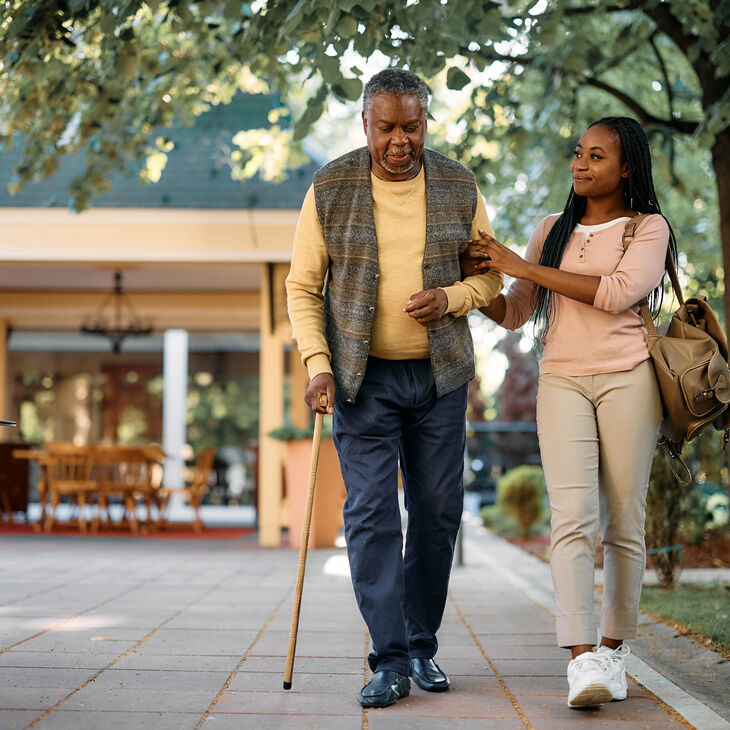Clinician burnout was a public health epidemic before COVID-19. Now, there is a clinician mental health pandemic within the pandemic. Burnout involves a sense of ineffectiveness, presenteeism, overwhelming emotional exhaustion and depersonalization,1 and is associated with rising rates of anxiety, depression and suicide.2 The Centers for Disease Control and Prevention’s National Institute for Occupational Safety and Health notes that, while nurses and physicians overall have higher proportionate mortality rates from suicide than the general population, Black nurses and physicians experience higher rates than their White counterparts. Findings from a recent rapid systematic review and meta-analysis indicated that viral epidemics result in an almost 30% prevalence of acute stress disorder, anxiety, burnout and depression.3 As of June 2020, the prevalence of anxiety disorders in the U.S. had risen as high as three times those observed in Quarter 2 of 2019, while depression had risen fourfold. Essential workers experienced worse mental health outcomes than the general population.4
Burnout among clinicians not only adversely impacts their own health and well-being, but also threatens the quality and safety of healthcare. A recent national study of nearly 1,800 nurses from 19 healthcare systems across the U.S. showed that nurses in poor mental and physical health reported making more medical errors, with depression being their strongest predictor. Nurses who perceived that their organizations supported their well-being had better mental and physical health outcomes.5 Burnout also results in declines in patient satisfaction, absenteeism, presenteeism and turnover, which are very costly to the healthcare system.6
Healthcare system issues, including long shifts, inadequate patient-staffing ratios, problems with the electronic health record, high acuity patients and personal protective equipment shortages contribute to burnout. To improve clinician health and well-being outcomes, organizations must address system failures, invest in building and sustaining a wellness culture led by a chief wellness officer, and implement evidence-based interventions known to promote the mental health and well-being of their clinicians.
Although clinicians strive to take great care of others, they often do not prioritize their own self-care. As one out of two Americans have a chronic disease and 80% of chronic disease is preventable with healthy lifestyle behaviors,7 clinicians need to engage in regular physical activity, eat healthy, not smoke, limit alcohol if they drink, sleep at least seven hours a night and practice regular stress reduction strategies so that they can be in optimal health and well-being. These self-care behaviors and wellness cultures also need to be established in health sciences colleges to ensure a healthier generation of clinicians.
The Ohio State University is recognized as a national leader in this movement, promoting a sustained wellness culture through a comprehensive, multi-component approach that targets leaders, managers/supervisors, the grassroots and the system, led by a chief wellness officer. The University regularly tracks health and well-being outcomes of clinicians, faculty, staff and students that informs strategies to accomplish its wellness strategic plan. Evidence-based interventions such as Mindfulness in Motion, Health Athlete and MINDSTRONG™ are regularly offered to clinicians, and special partnerships promote health and well-being in areas including staying calm and well in the pandemic, wellness support for front-line nurses and aiding clinicians who experience or survive trauma. In fact, the University’s Safe Campus and Scientific Advisory group formed in response to the COVID-19 pandemic has prioritized the mental health and well-being of its population and, next month, Ohio State will host its second National Summit on Promoting Well-Being and Resilience in Healthcare Professionals with national leaders and practitioners sharing evidence and best practices to battle clinician burnout.
Other stakeholders listed below are sharing leadership to demand changes in practice, public policy and academic institutions that prioritize clinician and student well-being. We have been a sick care and crisis-oriented healthcare system for way too long; a paradigm shift must occur that emphasizes prevention and early intervention. With an emphasis on prevention, not only would the health and well-being of clinicians be enhanced, patient outcomes would improve and healthcare costs would decline.
How many more clinicians have to die from suicide because of rising depression associated with burnout? How many more medical errors, the third leading cause of death in America,8 will be made by outstanding, well-meaning clinicians suffering from burnout? How many more clinicians will the American healthcare system lose, which will continue to jeopardize the quality and safety of care because it does not invest in supporting their health and well-being? It is time to stop just describing and talking about the problem. Urgent action is needed!





